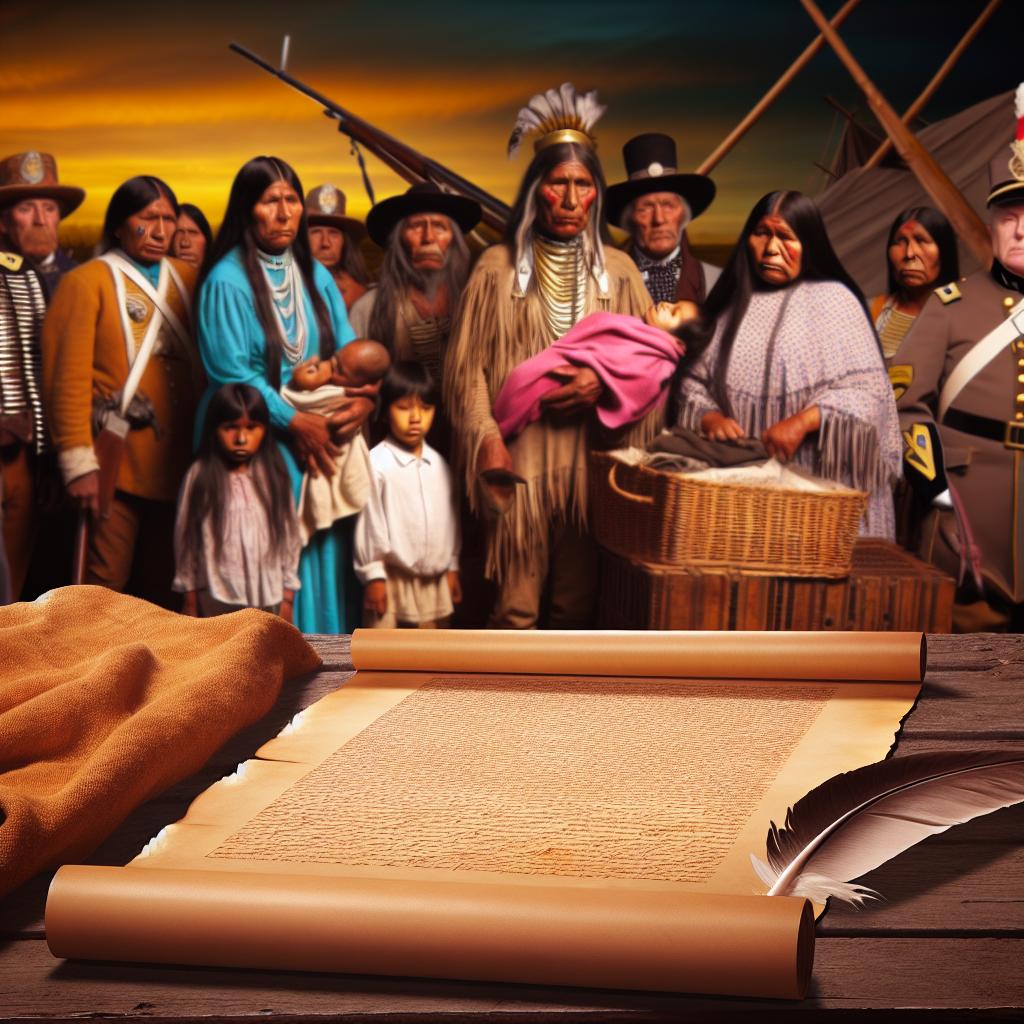The Indian Removal Act of 1830: A Historical Overview
The Indian Removal Act of 1830 stands as a pivotal piece of legislation in American history, enacted by President Andrew Jackson. This law was not only influential in determining the fate of Native American tribes but also exemplified the broader policies regarding territorial expansion that characterized the United States during this era. This legislation’s ramifications were significant, with reverberating effects on the social, economic, and cultural landscapes of the involved Native American tribes.
Background and Context
Before the passage of the Indian Removal Act, tensions were mounting in the southeastern United States due to increasing pressure from American settlers and land speculators. These groups were driven by the promising opportunities that the fertile lands offered, particularly for agricultural endeavors such as cotton cultivation. This quest for land was part of a broader national agenda of expansionism, colloquially known as “Manifest Destiny.” This belief posited that the United States was preordained to expand across the continent, an idea that fueled the push to acquire land occupied by Native American tribes. The tribes occupying these lands included the Cherokee, Creek, Choctaw, Chickasaw, and Seminole, among others, each with established communities and rich cultural heritages.
Provisions of the Act
The Indian Removal Act granted the President the authority to allocate unsettled lands west of the Mississippi River to Native American tribes. This allocation was in exchange for their ancestral lands located within existing state borders. The act was presented as a policy aimed at the amicable relocation of these tribes, yet in practice, it often resulted in coercive and forceful removals. The Act contained promises of assistance for the tribes during their relocation journey. These promises included financial compensation, logistical support to aid their settlement in new areas, and assurances of protection under U.S. laws. Nonetheless, the reality of how these provisions were implemented often diverged sharply from these promises, leading to adverse outcomes for the tribes.
Implementation and Impact
The implementation of the Indian Removal Act gave rise to the gravely infamous series of relocations known as the “Trail of Tears.” This tumultuous period involved the forced displacement of thousands of Indigenous people, leading to severe suffering. The conditions faced during these relocations were harsh and unforgiving, compounded by rampant disease, extreme weather, and a dire lack of sufficient supplies. Many Native Americans perished along the way. The Trail of Tears represents not only a period of acute distress but also marked a profound disruption in the social and cultural integrity of the tribes involved. The long-term effects included fragmentation of communities, loss of traditional knowledge, and challenges to cultural continuity. Various educational platforms provide detailed studies on the social impact experienced by the Native American tribes during and following these tragic events.
Opposition and Legal Challenges
The Indian Removal Act faced considerable opposition despite receiving support from numerous political figures and several states. Humanitarian and moral objections arose from many quarters, including from missionaries and some politicians who believed the policy was unjust and violated ethical principles. A critical legal challenge emerged in the case of Worcester v. Georgia. This landmark decision by the United States Supreme Court, led by Chief Justice John Marshall, ruled that the laws enacted by the state of Georgia purporting to impose regulations on the Cherokee Nation were unconstitutional, thereby affirming the sovereignty of the Native American tribes over their lands. However, this judicial decision faced a unique challenge as President Jackson reportedly disregarded the ruling, highlighting the tension between judicial authority and executive power regarding Native American treaties and legislation.
Legacy and Reflection
The legacy of the Indian Removal Act of 1830 remains a significant focus of reflection and scholarly study. It underscores the complexities and moral dilemmas inherent in 19th-century policies toward Native American populations. The impact of this Act continues to resonate in contemporary society, as discussions about historical injustices and the resilience of Indigenous populations persist. Native American tribes have had to navigate the consequences of this policy and continue to demonstrate remarkable resilience in preserving their cultural heritage and advocating for their rights. A comprehensive exploration of the Indian Removal Act and its enduring effects can be pursued through a variety of academic publications, documentaries, and historical archives accessible via educational institutions and libraries. These resources provide invaluable insights into understanding the depth of the challenges and triumphs experienced by Native American communities throughout American history.

